Legends, Myths, and Nightmare Fuel
Unknown Waters from Hell
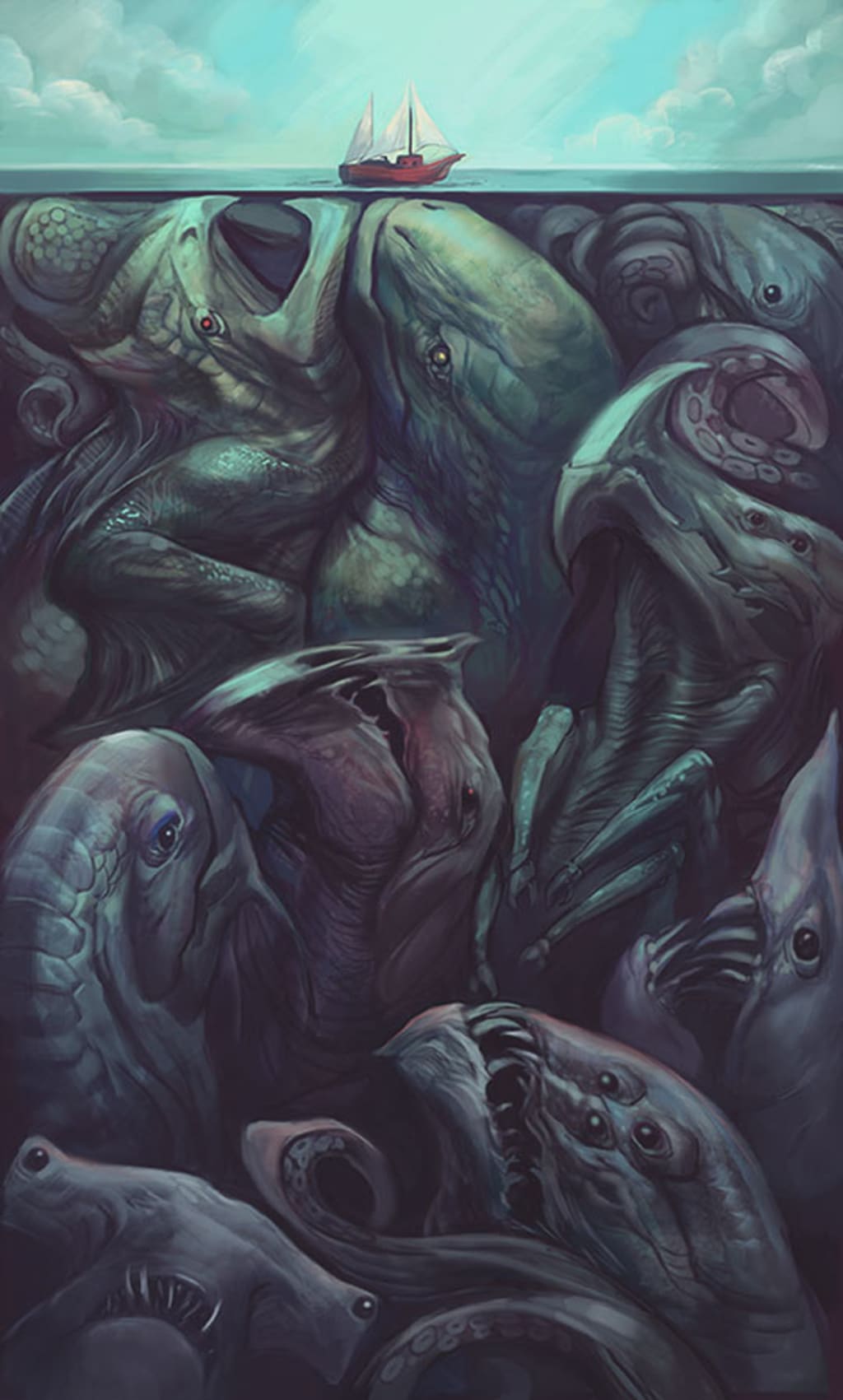
The oceans make up so much of our planet that we now know more about the surface of the moon than we do about what lies beneath. Be it fake sightings or real sightings, with the way video editing works, it's amazing how we can even decipher our reality with the never-ending technological advancements. While many of these monsters may just be nightmare fuel to encourage children to behave, some of them are backed by eye-witness accounts, and maybe even a bit of little faith. As somewhat fascinated, but also terrified, of what lies in wait at the bottom of the ocean, I know there are somethings that are better left unseen.
The Dobhar-Chú
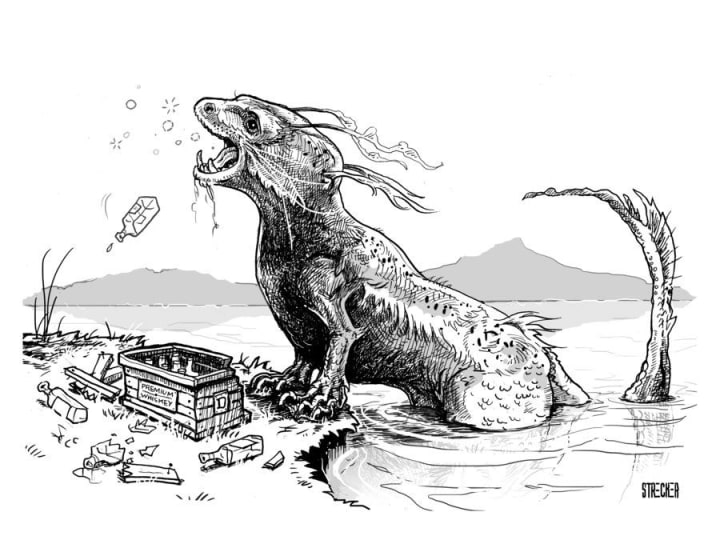
Origin: Irish Folklore
This creature, also know as the "Water Hound" has been spotted in several lakes in the west of Ireland—or so they say. It is know to be a bloodthirsty, gruesome creature that lived in deep waters and could travel great distances in water or on land. It is said to be swift, aggressive, and crave humans. There are usually two of these creatures, and when one is killed, its mate will swim up from the depths of the water and take revenge by pursuing its attacker, killing him and often eating him. This happens because the monster gives off an eerie high-pitched whistle to warn its mate of the threat.
Findings: There is no concrete evidence among the sightings about the infamous King Otter, there is however a gravestone belonging to a woman who was allegedly murdered by it. On her tombstone there is the image of the creature, with a story of how her husband found the monster had murdered her and then he killed it. However, the monster's mate gave him and his horse a chase across the country where the horse perished and he killed that monster as well. Not only is her gravestone real, but the horse is buried close to where the final fight was said to have gone down.
Grindylows
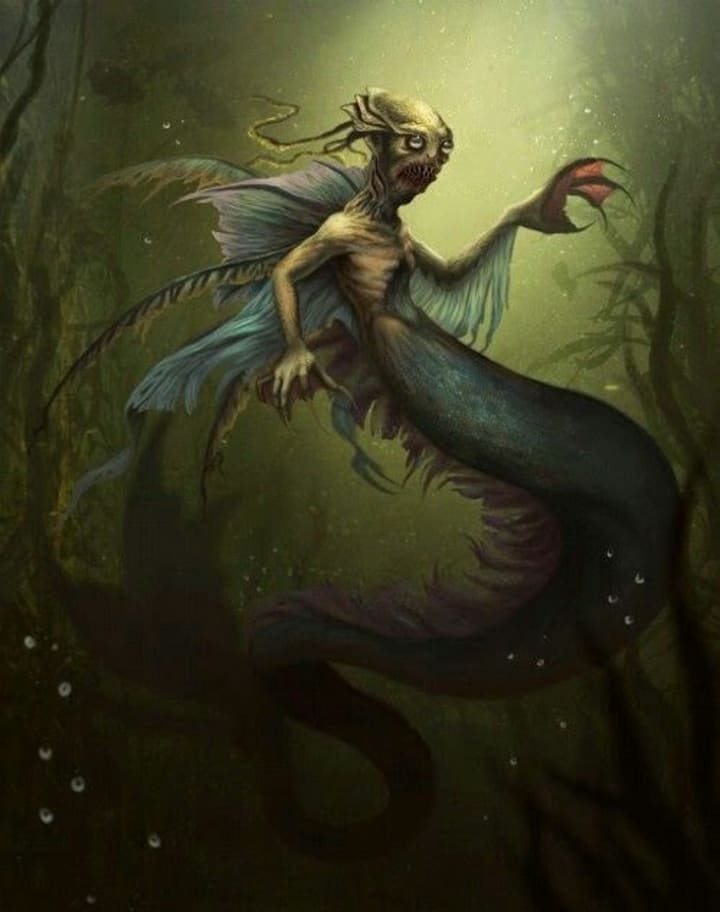
Origin: English Folklore
A grindylow, and not the ones from Harry Potter, were most famously known for kidnapping children from the edges of lakes and marshes. It was said that they grabbed the children with their long sinewy fingers, and devoured them when their parents weren't looking. (Sounds a little like Pennywise to me.) Unlike in Harry Potter, where these monsters were little and had tentacles, the legend depicts them with one tail, and an almost humanoid shape. A lot of the legends were told hoping that the children would stay away from the cold waters in the area.
Findings: Grindylow are folkloric creatures that originated from folktales in the English counties of Yorkshire and Lancashire. The origin is thought to be connected to Grendel, a name most remembered for its use in Beowulf but its also found in many Old English charters where it is seen in connection with meres, bogs and lakes.
The Kraken
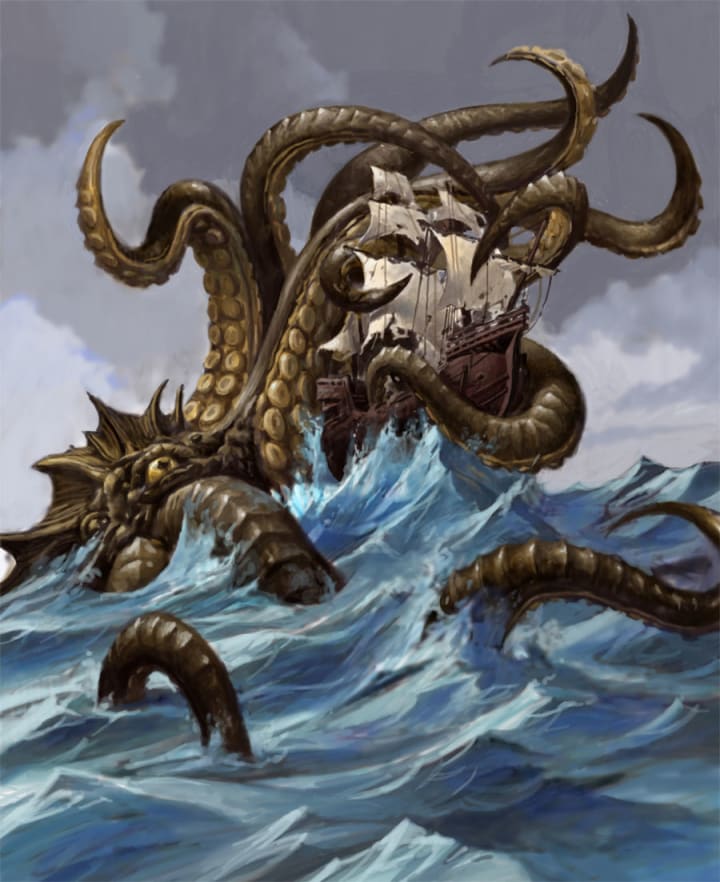
Origin: Norwegian
Release the Kraken! I know you said it in your head. The Kraken is said to be a giant sea creature (one mile long) that attacks ships and is generally described as an octopus or squid. According to some tales, the Kraken was so huge that its body could be mistaken for an island. Some people depict it as a more humanoid squid or a crab-like monster that creates whirlpools, but it most likely is just a giant squid.
Findings: In modern day, people believe that the allegations from the 13th century were definitely about giant squids. Even though back then people documented their sightings, a lot of other tried to discredit the idea of a large sea monster, that coincidentally lives at the bottom of the sea, so that humans rarely spot it. While giant squids are real, the idea of the Kraken is still out there, and maybe on the ocean floor.
The Megalodon
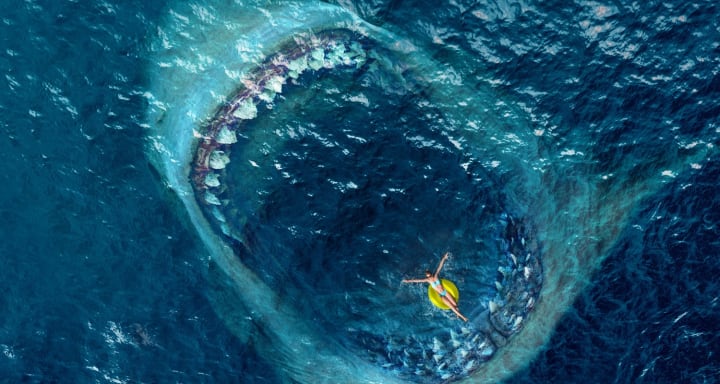
Origin: Early Miocene to End of Pliocene Era
There are several recordings of fossilized teeth that make the Great White Shark look like a dwarf. While movies like The Meg have further given sharks a bad reputation, the theory that the Megalodon is still out there is a terrifying thought indeed.
Findings: First of all, let me say that more people die by being injured by COWS, than by shark attacks, so let's keep that in mind if you're suddenly afraid to get in the water. You see, when sharks die they sink to the bottom of the ocean and their bones dissolve since they are made up of cartilage. Thankfully, we still have those giant teeth, but without any skeletal remains to go by, you can see why proving the size and the modern existence of this sea creature hasn’t been easy. General consensus believes the Meg was around 55 to 60 feet long from head to tail and weighed up to 100 tonnes. It seems that they went extinct over a million years ago, but big sharks keeping themselves hidden isn't uncommon. There's no concrete evidence, but it could still be lurking in the depths.
Ningen
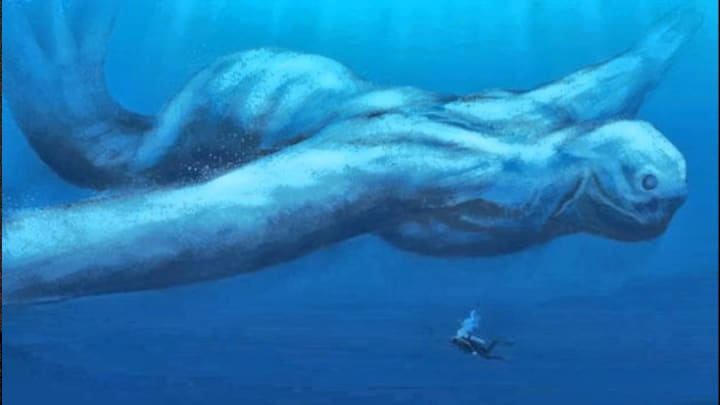
Origin: Japanese Folklore
Ningen (which means human in Japanese) is said to be a pale, almost whale-like humanoid monster. People believe it to have arms, legs, and even five-fingered hands with a mermaid tail, or sometimes legs. The Ningen is estimated to be 65 to 95 feet in length (20 to 30 meters!) and that it mostly makes an appearance in the dark of night, most eyewitnesses have also reported that these animals have no distinct facial features—save for two huge eyes and a slit-like mouth.
Findings: First reported sighting was in the 1960s, this large humanoid creature was seen in the icy Antartica ocean waters by, government run, Japanese “whale research” vessels. Pacific fishermen also claimed to have seen the colossal creature in the 1990s. These professional anglers were astounded by the size of this monster and even more shocked by this ostensibly albino beast’s distinctly humanoid form. Some theories include maybe an unknown species of giant albino ray, or unknown whale, or even aliens. Although I think that last one is the least likely.
Ogopogo
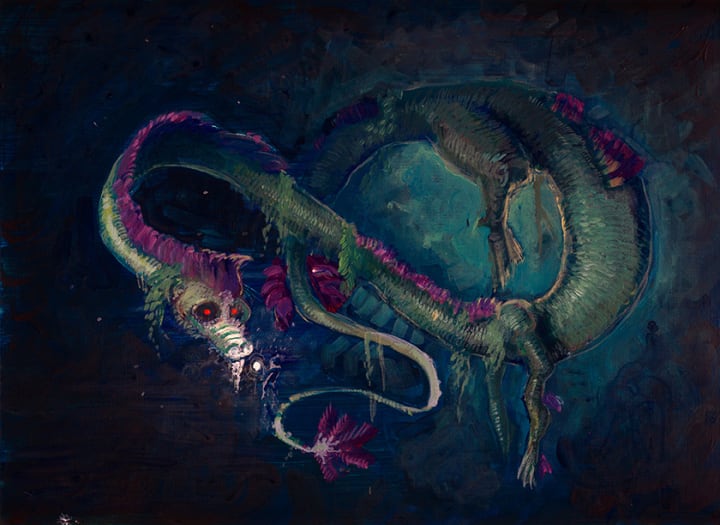
Origin: Canadian Folklore
Yes, even Canada has some sea monsters in their vast waters. Also known as Canada's Loch Ness monster, or possibly is THE Loch Ness monster, Ogopogo, some believe, has its roots in native Canadian Indian legends of a water spirit called N'ha-a-itk (also spelled Naitaka) that would demand a live sacrifice from travelers for safe passage across Lake Okanagan. Hundreds of years ago, whenever Indians would venture onto the lake, they brought small animals to drop into the water to grant them safe passage.
Findings: In 1946, a sighting is claimed to have occurred at an Okanagan Mission beach. This was supposedly witnessed by about thirty cars of people who all claimed to have seen the same thing. In 1968, Art Folden filmed what is allegedly footage of the rare creature, showing a large being moving across the water. After analyzing the footage it concluded that it was a solid, three-dimensional object. Folden noticed "something large and lifelike;" in the distance out on the calm water and pulled out his home movie camera to capture the object. A lot of people believe the Ogopogo is the most likely and best documented of all lake monsters.
Qalupalik
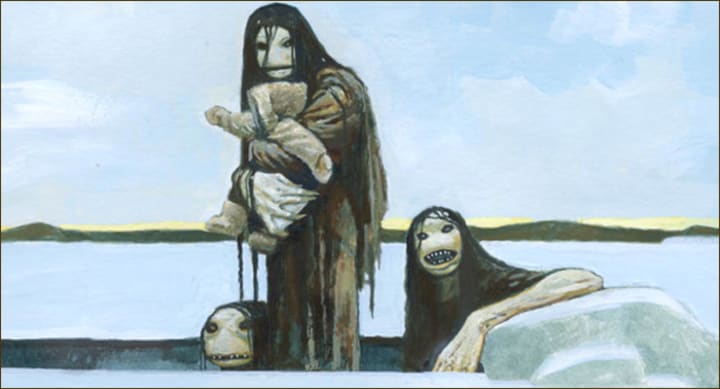
Origin: Inuit Legends
The Qalupalik is a human-like creature that lives in the sea, with long hair, green skin, and creepy long fingernails. The myth is that qalupaliks wear an amautik (a form of pouch that Inuit parents wear to carry their children) so they can take babies and children away who disobey their parents. The story was used to prevent children from wandering off alone, lest the qalupaliks take the children in their amautik underwater and keep them forever.
Findings: In 1608, in the gulf of Alaska British, explorer Sir Henry Hudson reported crew members sightings of beautiful women with fins instead of legs, pale skin, and long flowing raven hair. In 2004, in that same gulf near Juneau, two men went out fishing and one of the men claims to of seen a webbed, scaled hand holding the edge of the boat while it reached up and grabbed his friend before violently pulling the man into the waters never to be seen again. The man also claims that as the creature dragged his friend to his death he saw a scaled fin splash the surface before they disappeared. A couple other sightings have been reported, but are these mythical mermaids, sirens, or the infamous Qalupalik?
Umibozu
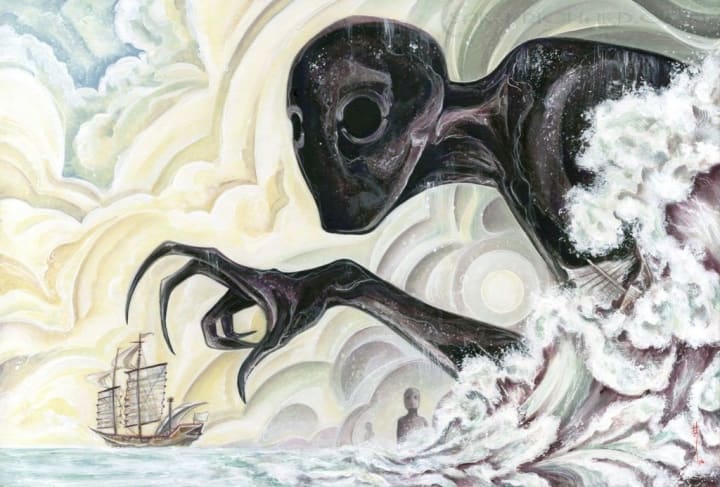
Origin: Japanese Folklore
The Umibozu is a sea-dwelling yokai from Japanese folklore. Its name is derived from the characters for "sea" and "Buddhist monk," which also gives away this spirit's origins. Supposedly, Umibozu are the vengeful spirits of priests who drowned at sea. Their appearance is that of a giant human head with a bald scalp and a perpetual smile. They have also been described as having cloudy or mist-shrouded bodies with serpentine limbs. According to legends, Umibozu capsize ships and drown seamen who insult or disrespect them.
Findings: In the early 1850s, Danish zoologist Japetus Steenstrup suggested that the Sea Monk was likely a giant squid, an animal which he himself described and assigned the genus name Architeuthis. A story published in 1971 in the Mainichi Shinbun, a daily Japanese newspaper, offers an account by sailors on a tuna fishing boat operating near New Zealand. The sailors said that a giant creature became tangled in their lines while they were trying to pull in their nets. The captain and crew described the part of the beast that appeared in the water as being brown in color, with wrinkled skin and very big eyes, about 15 centimeters wide. There was no nose or mouth. The portion of the body that breached the surface measured about 1.5 meters, which suggests that the entire body was incredibly large.
I talked about a few, very real deep sea monsters that would give any child nightmares, but this time no amount of research in the world prepared me for how scary some of these legends were—even I found myself shaking in my slippers. I hope now that when anyone finds themselves near the water, they pay a little bit more attention to those shadows underneath, because you never know what might pop its head up out of the water.
About the Creator
Celestia Morelle
When I write, I connect with a part of me that otherwise doesn’t exist. She’s a flame that I spend hundreds of thousands of words trying to grasp. I hope you feel her too when you’re reading. I turn the sirens voice into art, for she is me.






Comments
There are no comments for this story
Be the first to respond and start the conversation.